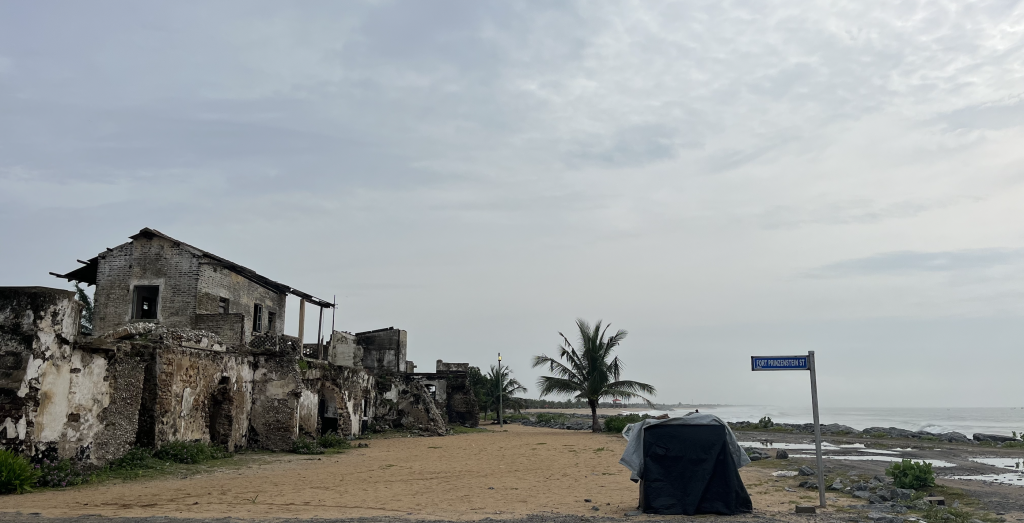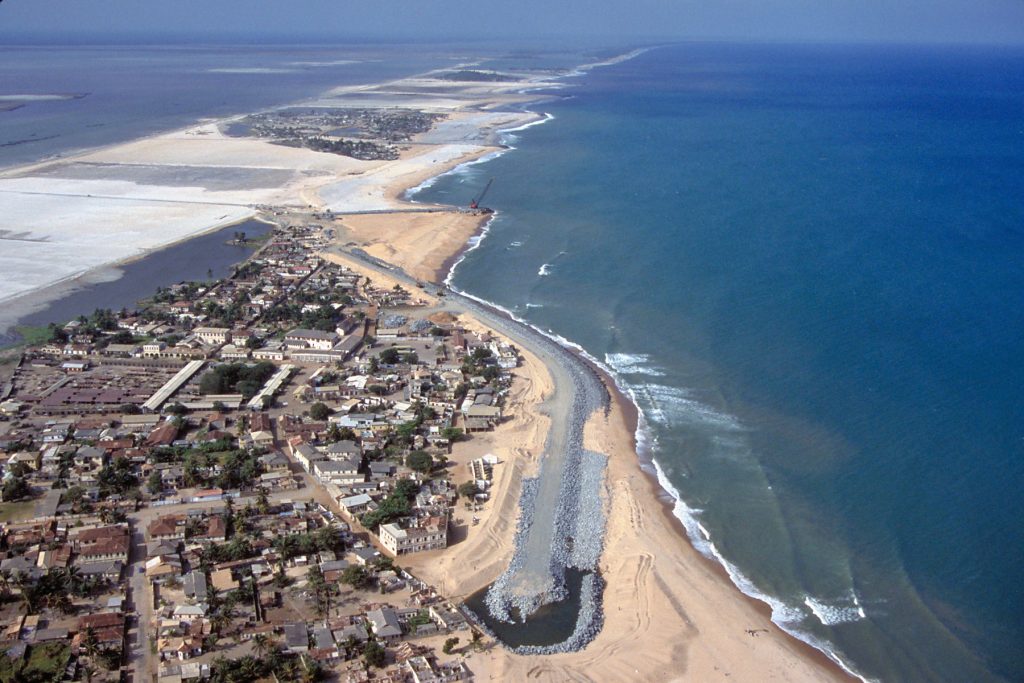By Albert Oppong-Ansah
Accra, June 28, GNA-Kporkporgbor, Gbakpeygbor and Fuveme are gone!
The sea has consumed the three communities in the Keta Municipality of the Volta Region of Ghana.
The three were a hub for fishing activities years ago. But now, the physical land space has been submerged.
Consequently, the inhabitants have relocated to other parts of the country and neighboring West Africa countries in search of jobs and livelihoods.
Agorkedzi, Atiteti, Dzita, Kedzikope, Horvi, Blekusu, Adina and Agavedzi appear to be the next in line to submit to the roar of the Atlantic Ocean.

A colonial relic, Prinzenstein, built in 1784 by the Danes in Keta, which served as a prison, is in ruins on the stretch.
It had served as a transit point for slaves from Accra, Northern Volta, Togo and Dahomey in Benin.
The roof is almost gone, the wooden structures are weak, while portions of the walls have fallen.
Few meters away from the forts is the Saint Michael Cathedral, described as a magnificent worship centre built in 1982 by the Catholic Church.
At high tide, sea water hits the fence walls of the church.
A kilometer from the Cathedral is the residence of Joana Adiku, 60, who has lived in the area all her life.
“For those of us here, we sit on tenterhooks, especially from July onwards. Our situation is like being notified of a pending war but all border exits are closed,” she says in a still voice.
Growing up, she says going to the seashore was quite a distance, but now it is just three feet away.
Mr Joel Degue, 58, a development worker, and an indigene of the area, says the beautiful sandbar between the Atlantic Ocean and the Lagoon Complex is sinking.
Two thirds of Keta have been taken by the sea. It used to be the capital of Volta Region but lost that status in 1986 due to land loss.
“In the 1980’s, Keta used to be one of the most thriving business towns where traders from Togo, Nigeria, Cape Verde, Benin, Niger visited. The sea invasion, which damaged market centres robbed the area of such a mega business status leading to the exile of most talented and exuberant people,” he says.

Mr Deng recalls that although the area had a history of coastal erosion, the rate of intrusion has been rapid in the last four decades.
“I grew up in Keta, specifically Dzelukope and Abutsiakope. I remember crossing a very wide sand of beach before reaching another one, especially around Ghanakpedzi and Lokpodzi beach towards Zomayi beach, Tettekope beach,” he recounts.
“Vividly, I remember seeing a very wide beach around Tegbi-Kpota, Woe Lighthouse, Whuti, Srogbe, Adakordzi, Akplorwotokor as recently as the 1990s. Today, greater portions of those beaches are gone into sea and the communities are precariously exposed.”
He says erosion along the coastland, especially between the Volta Estuary and Aflao is the greatest environmental threat in Ghana besides illegal mining popularly known as “galamsey”.
Causes
Multiple factors contribute to the vulnerability of Keta, particularly extraction of sand at the beach, geographical location, depletion of vegetative cover and rising sea level caused by climate change, says Dr Andrews Agyekumhene, Lecturer at the Department of Marine And Fisheries Sciences University of Ghana.
In Ghana, the waves normally move from west to east and Keta, which already is below sea level, is hit by high waves making that section vulnerable.

He explains that naturally, the sea tides flow to the shore with a quantity of sand and takes a quantity back when retreating.
“Once the sand deposit is extracted by the people, the tide has no choice than to take the sand available back, and that causes the shore to erode.”
Dr Agyekumhene says the world is experiencing increase temperature as observed by the Intergovernmental Panel on Climate Change (IPCC), a UN scientific body that provides regular assessments of the scientific basis of climate change, its impacts and future risks, and options for adaptation and mitigation.
This is causing the sea to warm, while the ice cape (glacier) is also melting due to the warming.
The results are an increase in volumes of sea water.
He tells the GNA that Keta may be far from the glacier, but the seas are connected, so happenings elsewhere impact on all.
The quest for a lasting solution
Successive governments have attempted solutions by building defense walls at some sections but the threats still linger.
Mr Emmanuel Gamegah, the Metropolitan Chief Executive of Keta, expresses optimism that the development of the commercial port will help mitigate the effects of the waves.
“From where I sit, I have been part of the process leading to the completion of the port. When that happens, this tidal wave problem will be solved. I am aware that the project will reclaim one kilometer of the land taken by the sea,” he says.
Aside that, Keta will be benefiting from the second phase of the West Africa Coastal Areas Resilience Investment Project 2 (WACA ResIP 2).
The World Bank in 2022 announced the approval of a $150 million in finance for Ghana to improve ecosystem health and protect communities from erosion, which includes the Volta Delta and Keta Lagoon.
This will be done through the protection and restoration of mangrove forests; nourishment of sandy barriers; dune revegetation; and building of protective infrastructure such as groynes.
For Dr Agyekumhene, building of infrastructure like sea defense helps but the best approach is to use nature-based solutions- planting more mangroves, coconuts and other vegetative plants to solve coastal erosion.

“The structures will fall apart with time like in the case of Ada. The defense wall often shifts the problem from one location to the other…”
The mangrove expert explains that best practice has demonstrated that vegetation holds the soil together preventing sea water from easily taking the soil.
With nature-based solutions, Keta’s frontline communities, including Atiteti, Dzita, and others on the coast of Ghana and those around the world threatened by coastal erosion will be protected.
GNA
This report was completed as part of the Centre for Journalism
Innovation and Development‘s 2023 Climate Change Fellowship with
funding support from the Centre for Investigative Journalism’s Climate
Change in News Media project